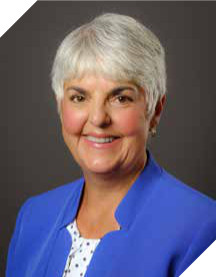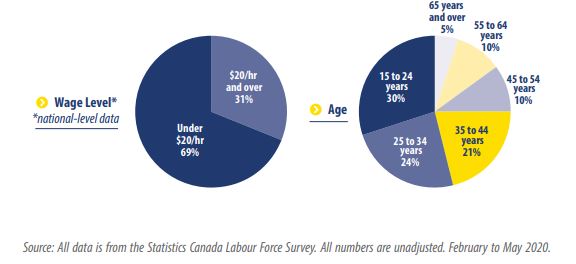Building BC’s Recovery, Together
Message from the Premier
The COVID-19 pandemic has challenged and changed our province.
More than 2,500 British Columbians have been diagnosed with COVID-19, and, tragically, more than 165 loved ones have died. Their passing occurred despite the heroic efforts of nurses, doctors and health-care workers.
Our friends and neighbours suddenly found themselves out of work. Some people were able to keep working from home, but if they had school-age kids, it required a lot of juggling. For others living in rural communities, working from home was not an option, and some traveled to remote work sites.
Across BC, thousands more kept working in grocery stores, transportation, pharmacies and other essential services to ensure we had what we needed while we fought to flatten the curve. Many business owners did their part to help flatten the curve by taking the difficult step of closing their doors.
Even if you haven’t been touched directly by illness or job loss, you’re likely facing some uncertainty about the future. We all are.
But there are better days ahead of us.
We’ve already taken critical steps to protect people’s health, homes and incomes. In partnership with Ottawa, we’ve taken steps to maintain basic incomes, protect jobs and assist businesses. These measures are just the start.
Recently, with the guidance of Health Minister Adrian Dix and Provincial Health Officer Dr. Bonnie Henry, we announced our plan to carefully restart BC. Now we begin to turn our attention from a restart to recovery. But recovery means more than just returning to what we had before.
Like you, I know that British Columbia can bounce back better than ever. We can build a stronger, more resilient BC by putting people at the centre of every decision we make.
We can build a BC where strong public services are always there when people need them. We can meet the challenge of the climate crisis. And we can do so in partnership with Indigenous peoples to ensure that everyone can benefit from our progress.
But we can’t do it without you. This document is the start of a discussion about what kind of a province we want to build.
Throughout the pandemic, we have emphasized transparency — by explaining the problem, sharing the evidence, charting a direction. That’s the same approach we need to plan our economic recovery.
Today, I’m asking you to have your say by completing BC’s online survey, participating in a virtual townhall or replying to this paper with your ideas and priorities. We’ll be reaching out during the coming weeks and months to hear your views and hear from community, Indigenous, business and other groups across the province.
Since the pandemic began, British Columbians’ response showed clearly that we are at our best when we work together. Your input will help us shape the decisions as we invest our $1.5 billion Economic Recovery Fund and plan for our next budget.
I hope you will participate in planning BC’s recovery — to help shape it, just as you helped flatten the curve.
Message from Minister of Finance and Deputy Premier
 Since the first case of COVID-19 in BC, our government has focused on addressing the most pressing needs of British Columbians during the crisis.
Since the first case of COVID-19 in BC, our government has focused on addressing the most pressing needs of British Columbians during the crisis.
We have had three main priorities: keeping people safe by supporting our hospitals and health-care workers; helping British Columbians who need it
with programs like income supports; and making sure that essential services like groceries and public transit continue to be available.
The health threat of COVID-19 is far from over. But we are making progress.
Thanks to the efforts of everyone from front-line doctors to families who practiced safe physical distancing, we have flattened the curve.
We know many people are still worried about losing their jobs or their homes, and are anxious about the future. Business owners are worried about confidence. When will people feel confident enough to resume spending, and when will entrepreneurs feel the time is right to invest and expand again?
As we start preparing for the road ahead, we won’t lose sight of these immediate concerns, and we’ll keep doing everything we can to provide help to the people who need it.
Throughout the pandemic, businesses providing essential services remained open safely. In mid-May we began to restart BC, allowing more businesses and services like parks to open safely. Now it is time to begin getting our economy back to pre-pandemic levels deliberately and safely.
Rebuilding our economy after COVID-19 will be a massive job. But we’re starting from a strong place. We have a lot of advantages in BC, from our natural resources and clean technology, to our capacity for research, to our culture of innovation and entrepreneurship. We’re the gateway to Asia and a major port to the US. And our most important advantage is our people.
Our province’s inherent strengths have not been lost during the pandemic. That is why, even though times are tough, and uncertainty clouds the year ahead, I have never been more optimistic about the future of British Columbia. By building on our strengths, and drawing on new ideas, we will restore economic growth and achieve a vibrant, inclusive, competitive economy.
The road to recovery will not be easy, but I know we can emerge stronger than ever.
What have we done so far
When the pandemic hit, our government quickly put in place a $5 BILLION COVID-19 Action Plan that protects people’s health, provides financial relief to people and businesses who need it, and builds BC’s plan for economic recovery.
Some of the measures are intended to help the majority of British Columbians. For example, BC Hydro rates have been reduced by 1 percent, which helps almost all people and businesses in the province save money. Other measures are more targeted, focusing help on those who need it most.
The $5 billion action plan is designed to complement measures brought in by the federal government, to amplify the benefits to people in BC. To take one example, the federal CERB offers people who have lost work due to COVID-19 a benefit of $2000 per month. The BC Emergency Benefit for Workers (BCEBW) offers CERB recipients an additional $1,000 one-time payment.
How has Covid-19 affected BC’s economy?

It’s too early to calculate the full economic consequences of COVID-19, or even say what will happen to our economy in the months ahead before the virus is controlled. But we do know the economic impact of this pandemic is as bad as any we have ever seen in the history our province. Hundreds of thousands of British Columbians have lost their jobs. Everyone has a family member, friend or neighbour facing unemployment.
The crisis came about very suddenly. Like jurisdictions across the country and around the world, we are facing unemployment levels similar to those of the Great Depression — but this time they appeared in a matter of weeks, a process that took years in the 1930s.
The trigger for this crisis was also unusual. The problem did not start within the economy itself, with something like a stock-market crash or a housing bubble. This time it was a sudden, external shock that forced governments everywhere to temporarily close large parts of the economy in order to prevent many deaths and far greater economic damage.
The people who have been most affected work in the services sector, especially in public-facing jobs like retail stores, restaurants, tourism, and social services.
As a result, women and young people in particular have seen terrible increases in unemployment. Part-time, informal, and self-employed workers have also been disproportionately harmed.
The unusual characteristics of this economic downturn mean the recovery will probably look different than recoveries after previous downturns.
And since the effects have not been the same for all people, or all sectors of the economy, our rebuilding plan can’t be one-size-fits-all, either.
The COVID-19 pandemic has helped us appreciate that “front-line” workers are not just on the front lines of health care. They include the thousands of other essential workers who have kept BC moving in challenging times.
Figure 1: BC industries with biggest job losses due to COVID-19
| % of Industry’s jobs lost | Share of total Jobs lost | % of job losses that were women | |
|---|---|---|---|
| All industries | 13% | 100% | 54% |
| Accommodation and food services | 50% | 30% | 65% |
| Retail trade | 19% | 19% | 57% |
| Construction | 14% | 11% | 10% |
| Information, culture and recreation | 22% | 8% | 57% |
| Other services (except government) | 29% | 11% | 70% |
| All other industries | 4% | 22% | 49% |
Grocery store clerks, truck drivers and farmers have kept the food supply chain open. Child-care workers have made it possible for nurses, firefighters and others to go to work knowing their kids are in good hands. Bus drivers have ensured public transit is there for those who need it. The list of essential workers is long. We are grateful to them all.
These examples remind us that when we talk about “the economy,” we are talking about people. The economy is not an abstract thing, separated from people’s real lives. Although we often use numbers to measure economic trends, behind those numbers are real people.
Above all else, a strong economy means one that benefits people. This understanding — that the economy is people — will guide us as we move into the next phase of our economic recovery
Figure 2: FIGURE 2: Share of total job losses by category

Next Steps
There is still a lot of uncertainty about what will happen with the pandemic. How quickly we bounce back depends on a number of questions no one can yet answer. When will we have a vaccine? How quickly can we develop an effective treatment? We don’t know.
Still, we can and must start to move forward, with caution.
Economically, the immediate challenge is to get people back to work as quickly and safely as possible, starting with those who have been hurt the most by the pandemic.
These people include:
- Indigenous communities and new Canadians;
- Women;
- Young adults (18 to 35 year olds);
- People earning less than $30/hr; and
- Service sector workers.
Getting people working again will not be easy. Employers must see demand for their services, so they can hire. Workers need transit to get to work and schools for their children. Consumers need confidence they can shop safely. All these factors have to come together to build our recovery.
The pandemic has exposed underlying gaps in our economy and society. We all now better appreciate the importance of workplace safety, strong public services, and our collective responsibility to take care of each other.
 As we move from restart to recovery, we have the chance to address those gaps, and to do much more. We can build back better than before.
As we move from restart to recovery, we have the chance to address those gaps, and to do much more. We can build back better than before.
For many years, our province’s social and economic development have been hampered by a failure to acknowledge and address the title and rights of First Nations. Since the 1970s, the courts have confirmed and defined inherent title and rights, but government legislation and policies have not kept up. The results have included prolonged negotiations, protracted litigation, and confrontations — all of which have hurt First Nations and kept us all, as British Columbians, from reaching our full potential in a way we can all benefit from.
Those are some of the reasons why, in November 2019, the Legislature voted unanimously to pass the Declaration of the Rights of Indigenous Peoples Act.
Similarly, taking action on climate change and keeping BC clean opens up incredible opportunities for jobs and growth. This argument is gaining support around the world — including from organizations like the International Energy Association and former central banker (and now-UN Special Envoy for Climate Change) Mark Carney.
By building partnerships with Indigenous peoples, businesses, research and education institutions, and workers, we are moving toward a low-carbon economy. That means a cleaner province for future generations, and a strong and diverse economy based on innovation.
The choices we make in the coming weeks and months can help us build an economy — and a province — that works for everyone. Reconciliation and clean growth will be at the heart of our recovery.
While some might say we can’t afford to make significant investments now, we know that we can’t cut our way back to where we were before — let alone to a better, fairer, more sustainable and more prosperous future.
What have we done so far
Supporting People – Highlights
People whose ability to work has been affected by the outbreak can get a taxfree $1,000 one-time payment, the BC Emergency Benefit for Workers (BCEBW) to supplement the CERB.
About 86 percent of British Columbians will receive enhanced payments up to $564 in July 2020 through an expanded BC Climate Action Tax Credit.
Renters will get help through temporary relief of up to $500/month, a moratorium on most evictions during BC’s emergency order, and a freeze on new annual rent increases by landlords.
ICBC customers on a monthly Autoplan payment plan, who are facing financial challenges due to COVID-19, can defer their payment for up to 90 days with no penalty.
BC Hydro customers who have lost income can receive a three-month credit, saving the average residential customer $477.
Putting BC values into our recovery
Before COVID-19, BC had one of Canada’s fastest growing economies and lowest unemployment rates. But for years, many people and communities had not seen the full benefit of all that growth.
Some of those inequities have become even more noticeable during the pandemic. For example, for people in communities where broadband access is unavailable or unaffordable, working from home may be impossible. For workers in sectors like film or tourism, the pandemic has had a devastating and potentially long-lasting impact. In other sectors, like transportation or the resource sector, employment has been hit less hard, but there is still increased uncertainty about what the future holds.
The pandemic has also reminded us how important our health care system is to our quality of life, and how many rely on mental health services and personal care homes.
The pandemic has affected people across our province — from Port Hardy to Cranbrook, Surrey to Fort Nelson. But COVID-19 is also a chance to take stock and start building a better BC. We can’t go back to an economy that only benefited those at the top, while leaving others behind.
We believe that everyone deserves the chance to learn, work and build a secure future with a good quality of life. We believe that public services should be there when people need them. We are convinced we must continue to confront the threat of climate change and the need for reconciliation with First Nations.
 There are some key values we all share as British Columbians.
There are some key values we all share as British Columbians.
One is a commitment to equity – economic opportunity should be available to all. Everyone should have an opportunity to improve their standard of living and participate fully in their local community.
A second is taking care of each other through co-operation and partnership – we’re stronger when we work together, from little things like checking in on elderly neighbours or coaching a team, to providing quality public services like health care to everyone.
A third is self-reliance – we have what it takes to build an innovative, creative economy that competes with the best, not one that works only for those at the top and leaves others behind. We value our environment and are committed to a low-carbon economy that achieves our commitment to fight climate change.
And a fourth is optimism and a sense of urgency – the conviction that working together we can build our province even better than before, recognizing we also need to act boldly now because people are hurting.
Coming out of COVID-19, our priorities for a stronger BC include:
- Strengthening our health care system – making sure we’re ready for future threats and that people can always get the care they need, including mental-health services;
- Creating and restoring – good-paying and sustainable jobs;
- Becoming more self-sufficient – growing BC’s manufacturing capacity and protecting our access to essential supplies and food security;
- Improving education, training and apprenticeship opportunities so that good jobs don’t go unfilled;
- Taking advantage of BC’s abundant clean energy, growing an economy that is innovative and clean – and exporting made-in-BC, low-carbon services, products and technologies to the world;
- Moving forward on meaningful reconciliation with Indigenous peoples, so that we can all benefit from BC’s success;
- Building the critical infrastructure and services that all communities need to thrive — from new roads, hospitals and schools to highspeed internet;
- Ensuring that BC is a strong fiscal footing, ready and able to provide the services people count on.
We were already investigating ideas to grow BC’s economy and create family-supporting jobs of the future through innovation and technology before the pandemic.
The final report of BC’s innovation commissioner, “Putting Innovation to Work for British Columbia: Growing B.C. Companies,” and the final report of the Emerging Economy Task Force were both released last month. We will draw on these recommendations to help guide us as we work with researchers and industry to grow a resilient, sustainable economy that works for people.
What have we done so far
Supporting Business – Highlights
Most commercial property tax bills have been reduced by an average 25 percent, providing up to $700 MILLION in relief. And to give commercial landlords and businesses more time to pay their reduced property taxes, late payment penalties for commercial properties have been waived until October 1, 2020.
Businesses with a payroll over $500,000 can defer their employer health tax payments until September 30, 2020.
(Businesses with a payroll under this
threshold are already exempt.)
Payments for provincial sales tax (PST), hotel tax, carbon tax, motor fuel tax and tobacco tax are deferred, freeing up capital for businesses to use now when they need it.
The BC Business COVID-19 Support Service serves as a single point of contact for businesses throughout the province looking for information on resources available to them.
Small businesses that had to close due to COVID-19 can have their BC Hydro bills forgiven for three months, saving on average $363.
Have your say – it’s important
COVID-19 is a wake-up call that we need to be better prepared and that, although there will be financial costs, we can never again let a pandemic affect people and our economy so much.

To get there, your voice is essential. That’s why we’re asking you to share your ideas about BC’s recovery.
What we need to hear from you
Recovering from COVID-19 is about setting priorities. Your government’s priority is people and the things that matter most in our everyday lives. Some of the critical questions that we need to answer together are:
- What do we need to do together to strengthen and improve our health care system? That means everything from our hospitals, clinics and personal care homes, to the medical staff and supplies.
- What is the top priority for you personally when it comes to improving your quality of life? For some people that means affordable child care or housing – what does it mean for you?
- What would most help improve your work life or work prospects? That could mean training to allow you to take advantage of job opportunities, or affordable child care closer to home.
- Are we on the right track? Do you see your concerns and needs reflected in this approach?
What have we done so far
Economic Recovery Task Force
The Premier’s Economic Recovery Task Force brings together leaders from business, labour, First Nations and not-for-profits to help ensure the Province’s economic response to COVID-19 is effective and responsive to the needs of British Columbians.
The task force meets weekly to advise government on our economic response to the COVID-19 crisis. It includes Premier John Horgan, Finance Minister Carole James, Minister of Jobs, Economic Development and Competitiveness Michelle Mungall, other members of cabinet and leaders from business organizations, including the Business Council of BC, BC Chamber of Commerce, Vancouver Board of Trade, Surrey Board of Trade, the BC Federation of Labour, First Nations organizations and the not-for-profit sector.
The task force is helping ensure the benefits of provincial programs are reaching their intended targets and complementing federal programs.
Three ways you can have your say
- Share your opinions: An online survey is one of the fastest and easiest ways that you can ensure your opinions are heard. It’s a chance to provide answers to some important questions and to give advice based on what you’re seeing in your community. Visit gov.bc.ca/recoveryideas
- Respond to this paper: This paper sets the stage for the challenges ahead of us. If you’ve read this far and already have some ideas and advice, you can submit them to recoveryideas@gov.bc.ca.
- Participate in virtual townhalls: We’ve connected with tens of thousands of British Columbians in virtual townhalls – and there’s more to come. This is a chance to share your comments and ask questions. Learn more about the virtual townhalls at gov.bc.ca/recoveryideas
Who else we’ll be hearing from
As conversations across the province move from restart to recovery, it is clear recovery means more than returning to the past. This is an opportunity for businesses, organizations and non-profit agencies to help us generate solutions to address the challenges they face.
Throughout the weeks and months ahead, Premier John Horgan and Finance Minister Carole James will be leading roundtable discussions with businesses, Indigenous peoples and organizations to get their ideas. These conversations will be framed to gather input on restoring consumer confidence, accelerating job creation, and supporting job security.
 Engagement roundtables will also include discussions with academics and economists, youth and student groups, business owners and industry associations, social service providers, Indigenous leaders, local governments, environmental and civil society groups. Cabinet ministers and MLAs will continue reaching out to constituents, as well as sector stakeholders, local businesses and community organizations. Input received will help inform government’s economic recovery plan.
Engagement roundtables will also include discussions with academics and economists, youth and student groups, business owners and industry associations, social service providers, Indigenous leaders, local governments, environmental and civil society groups. Cabinet ministers and MLAs will continue reaching out to constituents, as well as sector stakeholders, local businesses and community organizations. Input received will help inform government’s economic recovery plan.
Acknowledging that these stakeholders are the experts in their fields, these conversations will provide an opportunity to collaboratively create solutions to challenges facing all British Columbians.
This outreach also includes the annual budget consultations that the Legislative Assembly of British Columbia Finance Committee will hold throughout the summer months. This will be one more way that people can share their ideas.
How WorkSafeBC is helping businesses restart safely
Many businesses in BC operated safely throughout the pandemic. Starting in mid-May, more businesses and services have started to open.
WorkSafe BC is providing sector-specific guidelines and other resources to help businesses with their planning. Every industry or sector is being asked to build on those guidelines to develop appropriate standards for health and safety measures in their areas.
Sector standards are then reviewed by WorkSafeBC with input from public health officials.
Individual businesses and organizations do not need to submit their own plans for review or approval, but they must make them available to their workers and their customers by posting on the premises.
WorkSafeBC inspectors and public health officials will be working to ensure businesses have their COVID-19 Safety Plan in place, that it aligns with guidelines and sector standards, and that it is being followed. This will include inspectors visiting worksites across the province.
This approach strikes a balance between public health, the health and safety of workers, public confidence that shopping or visiting a business is safe, and not asking small businesses to develop complex plans for approval before they can begin to restart and rehire people.
List of business sectors that have restarted
Phase 2 (Mid-May onwards)
| Under enhanced protocols |
|---|
|
|
|
|
|
|
|
|
|
|
Phase 3 (June to September, if transmission rate remains low or in decline)
| Under enhanced protocols |
|---|
|
|
|
|
|
|
|

